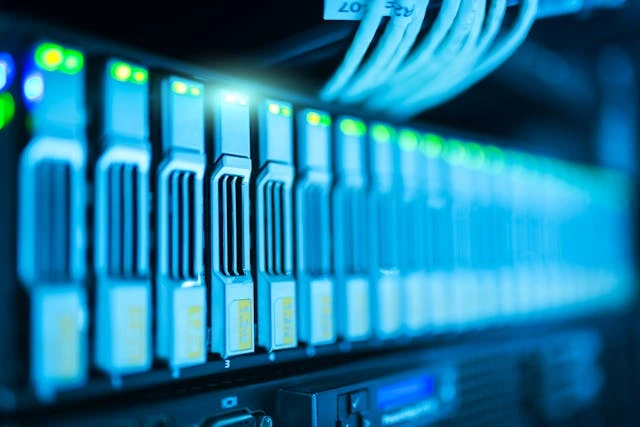WHAT IS CLOUD COMPUTING?
Cloud computing has revolutionized how individuals and businesses engage with technology in 2025. It enables users to run powerful workflows, deploy applications, and manage vast data sets—without the burden of owning or maintaining physical infrastructure.
If you’ve ever tried to self-host an application, you likely encountered this:
- Built an on-premise server.
- Managed a server room with adequate cooling.
- Upgraded RAM and CPU manually as demand increased.

This approach demands considerable effort and expense—often more than building the app itself. Not to mention, server scalability is limited, forcing you to over- or under-provision hardware.
Cloud computing simplifies all of this. Instead of building and managing servers, cloud providers offer on-demand resources. You focus on developing your product; the provider handles the infrastructure, security, and scaling.
LET’S BREAK DOWN CLOUD COMPUTING, ITS BENEFITS, AND ITS CURRENT STATE IN 2025.
KEY TAKEAWAYS
- Cloud computing delivers on-demand IT services like storage, networking, and software over the internet.
- It offers scalability, cost savings, and global accessibility, making it essential in today’s tech landscape.
- Leading providers include AWS, Microsoft Azure, and Google Cloud, each with unique strengths.
- New trends such as edge computing, AI-native infrastructure, and green cloud practices are shaping the future.
UNDERSTANDING CLOUD COMPUTING
What Is Cloud Computing in Simple Terms?
Imagine renting computing power instead of owning machines. Cloud computing lets users access servers, storage, software, and analytics over the internet—eliminating the need to buy and maintain physical hardware.
WHY IT’S POWERFUL IN 2025:

Cloud adoption is at an all-time high, driven by innovations in AI, cybersecurity, serverless architecture, and sustainability. Businesses are migrating to the cloud not just to save costs, but to accelerate innovation, scale operations, and improve data security.
CORE FEATURES OF CLOUD COMPUTING
SCALABILITY
Automatically scale resources based on real-time workload—no need to guess capacity. Cloud platforms dynamically handle spikes and dips in usage.
COST-EFFICIENCY
Pay only for what you use. With options like pay-as-you-go and spot instances, companies reduce CAPEX significantly.
ACCESSIBILITY
Work from anywhere—laptop, phone, or tablet. Cloud computing ensures seamless access across devices and geographies.
AUTOMATION
Routine maintenance, patches, and upgrades are automated. Tools like AWS Lambda and Google Cloud Functions manage underlying infrastructure for you.
Note: Security is a shared responsibility—while providers secure the infrastructure, users must secure applications and data.
TYPES OF CLOUD COMPUTING (2025 MODELS)
- Public Cloud
Shared infrastructure managed by third-party vendors (e.g., AWS, GCP). Ideal for flexibility and fast deployment. - Private Cloud
Dedicated infrastructure for one organization—enhanced control, ideal for industries with strict compliance needs. - Hybrid Cloud
Combines public and private clouds for workload optimization and data flexibility. - Multi-Cloud
Leverages services from multiple vendors. Avoids vendor lock-in and enables tailored cloud strategies.
TOP CLOUD PROVIDERS IN 2025

Amazon Web Services (AWS)
Still the leader with a vast range of services, global reach, and unmatched innovation in AI, quantum computing, and cloud-native development.
Microsoft Azure
Excels with enterprise-grade tools, hybrid solutions, and deep integration with the Microsoft ecosystem. Azure OpenAI and Copilot integration are game-changers in 2025.
Google Cloud Platform (GCP)
Renowned for its AI-first approach, sustainability efforts, and advanced tools like Vertex AI and BigQuery Omni for multi-cloud analytics.
Other Notables
- IBM Cloud: Strong in AI, hybrid infrastructure, and regulated industries.
- Oracle Cloud: Excels in database performance and reliability for enterprise-scale applications.
MANAGING CLOUD COSTS IN 2025
Despite the benefits, cloud costs can spiral out of control without strategy. Here’s how to optimize:
RIGHT-SIZING RESOURCES
Continuously analyze usage and adjust resources to match actual demand.
USAGE MONITORING
Use tools like AWS Cost Explorer, Azure Cost Management, and GCP Billing Reports to track and optimize spending.
RESERVED INSTANCES & SAVINGS PLANS
Lock in long-term usage for up to 72% savings compared to on-demand pricing.
AVOID HIDDEN COSTS
Be aware of data transfer fees, idle instances, and unarchived storage. Use automated alerts to monitor these.
REGULAR AUDITS
Review usage and pricing models quarterly. Cloud FinOps practices are vital in 2025 for keeping budgets in check.
FINAL THOUGHTS: CLOUD IN 2025
Cloud computing is no longer just a tech trend—it’s the backbone of digital transformation. Whether you’re a startup, enterprise, or solo developer, understanding and leveraging cloud platforms is key to growth, agility, and innovation in 2025.
FAQS ON CLOUD COMPUTING (UPDATED FOR 2025)
What is cloud technology in simple terms?
A way to access and manage IT services like servers, storage, and apps online—without physical hardware.
What are cloud solutions?
Cloud-delivered services including SaaS, PaaS, and IaaS for businesses of all sizes.
What is a cloud environment?
The setup where cloud resources operate—public, private, hybrid, or multi-cloud models.
What is cloud software?
Online applications hosted on cloud servers, accessible via browsers or connected apps.
What is cloud programming?
Developing software specifically for cloud deployment, using tools like containers, microservices, and serverless frameworks.
What are the benefits of cloud computing?
Scalability, flexibility, reduced costs, global accessibility, and access to cutting-edge technologies like AI and big data.
How secure is cloud computing?
Highly secure when responsibilities are clearly defined—providers secure infrastructure, users must secure their data and applications.
What are the main cloud service models?
- SaaS – e.g., Gmail, Microsoft 365
- PaaS – e.g., Azure App Services, Google App Engine
- IaaS – e.g., AWS EC2, Oracle Cloud Infrastructure
Can cloud computing be used offline?
Some apps offer offline modes that sync when back online, but core services need internet access.
What is serverless computing?
Run code without managing servers. The provider handles provisioning. Examples: AWS Lambda, Azure Functions.









